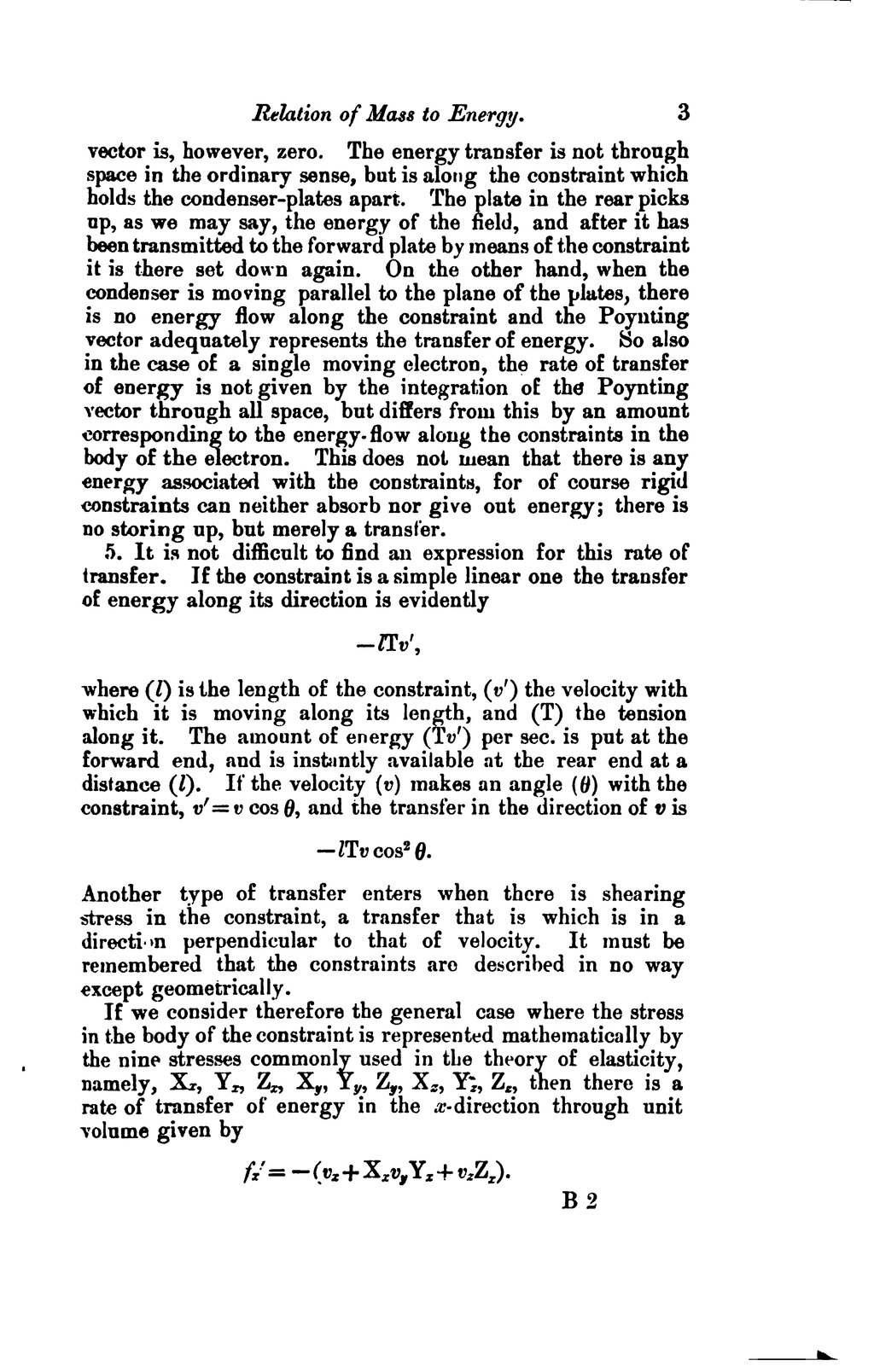vector is, however, zero. The energy transfer is not through space in the ordinary sense, but is along the constraint which holds the condenser-plates apart. The plate in the rear picks up, as we may say, the energy of the field, and after it has been transmitted to the forward plate by means of the constraint it is there set down again. On the other hand, when the condenser is moving parallel to the plane of the plates, there is no energy How along the constraint and the Poynting vector adequately represents the transfer of energy. So also in the case of a single moving electron, the rate of transfer of energy is not given by the integration of the Poynting vector through all space, but differs from this by an amount corresponding to the energyflow along the constraints in the body of the electron. This does not mean that there is any energy associated with the constraints, for of course rigid constraints can neither absorb nor give out energy; there is no storing up, but merely a transfer.
5. It is not difficult to find an expression for this rate of transfer. If the constraint is a simple linear one the transfer of energy along its direction is evidently
,
where () is the length of the constraint, () the velocity with which it is moving along its length, and () the tension along it. The amount of energy () per sec. is put at the forward end, and is instantly available at the rear end at a distance (). If the velocity () makes an angle () with the constraint, , and the transfer in the direction of is
.
Another type of transfer enters when there is shearing stress in the constraint, a transfer that is which is in a direction perpendicular to that of velocity. It must be remembered that, the constraints are described in no way except geometrically.
If we consider therefore the general case where the stress in the body of the constraint is represented mathematically by the nine stresses commonly used in the theory of elasticity, namely, , then there is a rate of transfer of energy in the x-direction through unit volume given by
.











